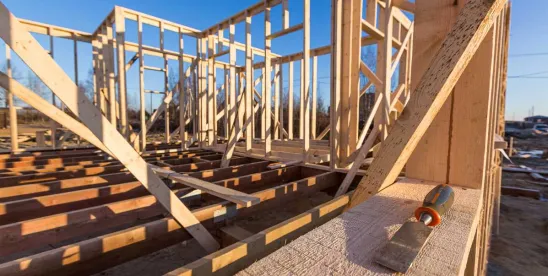In its $5.2 billion Affordable Homes Act (AHA) signed by Gov. Maura Healey last week, the Massachusetts Legislature came down the chimney with some presents that have been on developers’ wish lists for decades. In addition to making accessory dwelling units (ADUs) up to 900 square feet a by-right use in residential zoning districts (see our recent post here), and curtailing the judicially-created zoning merger doctrine that has prevented construction of housing on undersized lots that were legal when created, the Legislature has significantly shifted the balance of power between developers seeking to build housing and other beneficial projects, and abutters and other NIMBYs intent on stopping them.
For almost 50 years, since the passage of the current state Zoning Act (M.G.L. c. 40A) in 1975, determined project opponents with even modest resources have wielded an outsized influence on the development process. Anyone wanting to thwart a proposed development could file a relatively simple court appeal of any zoning permit and with minimal efforts sustain the case. The local zoning board typically steps back and lets the developer carry the ball – and incur the substantial expense – to defend a permit. Developers can and often do file motions seeking early dismissal of zoning appeals for lack of “standing” – a requirement that an appealing plaintiff show that the permit will harm them in some unique way – but the applicable legal standards favor the plaintiff, and cautious judges often deny such motions in favor of deciding the case on a full factual record after trial, a process that can take 1-2 years complete. And even if the developer wins, the plaintiff can appeal that ruling, adding another 18 months or more to the timeline before the validity of the permit is finally affirmed and the project can proceed. In the meantime, given the cost of litigation, carrying costs on the property, and the possibility of declining market conditions, rising interest rates, and other financial risks, many beneficial projects fall by the wayside – which often is precisely the point of the appeal.
Before 2020, the Zoning Act contained no meaningful deterrent to the filing of a weak or baseless zoning appeal. Chapter 40A, § 17 (Section 17) provided that “Costs shall not be allowed against the party appealing from the decision of the board or special permit granting authority unless it shall appear to the court that said appellant or appellants acted in bad faith or with malice in making the appeal to the court.” In this context, “costs” refers to a narrow category of legal expenses, such as filing fees and the cost of deposition transcripts, and does not include attorneys’ fees. These “costs” typically are minimal, and the requirement that the permit holder prove that the appeal was filed “in bad faith or with malice” – a high legal bar – makes attempting to recover these minimal “costs” impractical in most cases.
In 2020, the Legislature attempted to remedy this situation by adding a new paragraph to Section 17:
The court, in its discretion, may require a plaintiff in an action under this section appealing a decision to approve a special permit, variance or site plan to post a surety or cash bond in an amount of not more than $50,000 to secure the payment of costs if the court finds that the harm to the defendant or to the public interest resulting from delays caused by the appeal outweighs the financial burden of the surety or cash bond on the plaintiffs. The court shall consider the relative merits of the appeal and the relative financial means of the plaintiff and the defendant.
This provision was a small step in the right direction, allowing permit holders to request a bond of up to $50,000 to secure the payment of “costs,” which the court could grant after balancing the potential harm to the permit holder with the financial burden on the plaintiff, and after considering the “relative merits” of the appeal and the “relative financial means” of the plaintiff and the permit holder. It appeared that under this new “relative merits” language a court could impose a bond of up to $50,000 without finding that the appeal was brought in bad faith or with malice, though there was some ambiguity on this point. Then, in its 2022 decision in Marengi v. 6 Forest Road, LLC, the Supreme Judicial Court clarified that under the amended statute (1) a bond could be ordered with no finding of bad faith or malice, as long as the appeal appeared to be so devoid of merit that the court could reasonably infer bad faith or malice, and (2) the term “costs” – while still not encompassing attorneys’ fees – should be construed more broadly than in other contexts to include expert witness and consultants’ fees, which in a case that goes to trial can be considerable (see our post discussing Marengi here). This led to an uptick in bond requests by developers, but the difficulty of showing that an appeal is “devoid of merit” combined with the $50,000 limit – which even if granted in the full amount would secure only a fraction of the actual costs of defending a bogus appeal – made seeking a bond still not worthwhile in most cases.
After this unsatisfying 2020 amendment to Section 17, real estate industry organizations continued pressing for further changes to the bond provision, making the case that the ease and relatively low cost of filing a weak or baseless zoning appeal – and sustaining it for years – was depressing the production of badly-needed housing. In the recently concluded legislative cycle those efforts bore major fruit with last week’s enactment of the Affordable Homes Act. The AHA, which due to its emergency preamble takes effect immediately (with a few exceptions not relevant here), makes three crucial changes to Section 17. These changes appear in Sections 11, 12, and 13 of the act.
In Section 11, the AHA amends the first paragraph of Section 17 by adding a sentence requiring that each appealing plaintiff “shall also sufficiently allege and must plausibly demonstrate that measurable injury, which is special and different to such plaintiff, to a private legal interest that will likely flow from the decision through credible evidence.” In part this new language re-states the requirements for “standing” that have developed through case law, but it goes further in requiring the plaintiff – apparently at the outset of the case – to not only allege but to “plausibly demonstrate” through “credible evidence” that the plaintiff will suffer “measurable injury” that is “special and different to such plaintiff.” It remains to be seen how courts will interpret and apply these requirements – particularly the “measurable injury” standard, which is a new concept in the law of standing – but at a minimum courts should develop a protocol for evaluating and adjudicating the plaintiff’s compliance with these requirements as the first order of business after an appeal is filed.
In Section 12, the AHA deletes entirely the bond provision that the Legislature added to Section 17 in 2020, and replaces it with the following:
The court, in its discretion, may require a plaintiff in an action under this section appealing a decision to approve a special permit, variance or site plan to post a surety or cash bond in an amount of not more than $250,000 to secure the payment of and to indemnify and reimburse damages and costs and expenses incurred in such an action if the court finds that the harm to the defendant or to the public interest resulting from delays caused by the appeal outweighs the financial burden of the surety or cash bond on the plaintiffs. The court shall consider the relative merits of the appeal and the relative financial means of the plaintiff and the defendant. Nothing in this section shall require bad faith or malice of a plaintiff for the court to issue a bond under this section.
This new paragraph not only quintuples the upper limit of the bond that a permit holder can request, it greatly broadens the scope of expenses the bond is intended to cover. While per the 2020 amendment the purpose of the bond was “to secure the payment of costs,” the purpose is now “to secure the payment of and to indemnify and reimburse damages and costs and expenses incurred in such action.” This broadened scope allows the permit holder to credibly argue that a six-figure bond – even one approaching or reaching the $250,000 maximum – is justified. While the court still must conduct the same previously-required balancing of harm to the defendant against the financial burden on the plaintiff, and still must consider the “relative merits of the appeal” and the “relative financial means of the plaintiff and the defendant,” the new paragraph appears to go beyond Marengi in affirmatively stating that “Nothing in this [bond] section” shall require bad faith or malice on the part of the appellant.
In Section 13, the AHA replaces the sixth paragraph of Section 17, which as mentioned above used to read “Costs shall not be allowed against the party appealing from the decision of the board or special permit granting authority unless it shall appear to the court that said appellant or appellants acted in bad faith or with malice in making the appeal to the court.” The new version of this paragraph states:
Costs, including reasonable attorneys’ fees, in an amount to be fixed by the court may be allowed against the party appealing from the decision of the board or special permit granting authority if the court finds that the appellant or appellants acted in bad faith or with malice in making the appeal to court.
Besides flipping the phraseology around from “shall not be allowed . . . unless” to “may be allowed . . . if” (a more welcoming approach), this revision for the first time authorizes an award of of not just “costs” but attorneys’ fees – potentially a large sum, especially if the case goes all the way to trial – if the permit holder can show that the appellant brought the appeal in bad faith or with malice. While as noted this is a high legal bar and difficult to prove, the mere possibility that, at the end of the case, the permit holder could recover its attorneys’ fees from the appellant may deter the filing of at least some number of groundless appeals brought solely to delay or thwart a project.
Time will tell how these important revisions to Section 17 will play out, how courts will apply the new standards, and what deterrent effect they’ll have on the filing of weak or baseless zoning appeals. But for now there’s no doubt that developers’ counsel have a whole new set of arrows in their quivers, and that can only help the cause of housing production in the Commonwealth.



 />i
/>i

